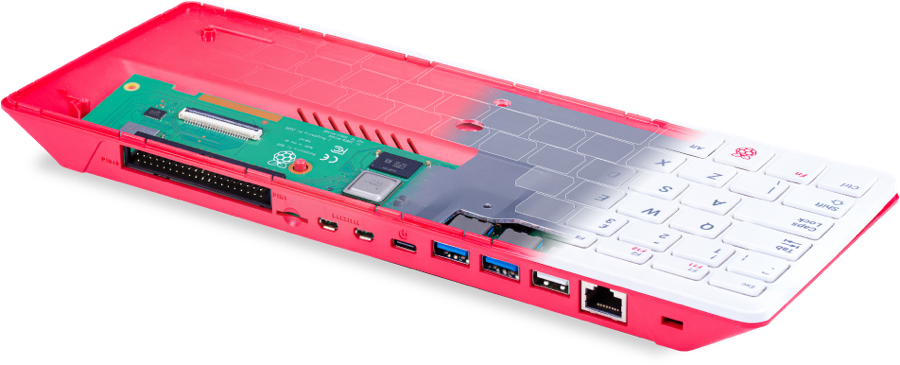You may think that a Raspberry Pi 4 inside a keyboard would create some limitations, however that’s not the case. Indeed, you won’t be able to utilise the Pi 400 in quite the same way as a standard Pi 4, but there’s lot you can get to grips with.
We’ve put together ten possible projects that you could use your Pi 400 with, that will entertain and keep you busy while helping you learn more about coding, the Pi and computing.
Retro Computing – With the Pi 400 being very similar to that of the great home computers of the 80s, we thought we’d start these ideas with a simple retro-themed project. Fuse is a ZX Spectrum emulator that’s available for the Raspberry Pi. Install it, and you enjoy some of the greatest games ever created.
C64 Love – Since we’ve mentioned the ZX Spectrum, it’s only fair that we include the other great 8-bit home computer from the 80s, the Commodore 64. The Pi uses a program called c64-raspi for C64 emulation, and can be installed via https://c64emulator.111mb.de/index.php?site=pp_raspi&lang=en&group=c64.
Stream PC Games – It’s possible to stream any game installed on your powerful gaming PC to a Raspberry Pi. All you need is ensure that your home network is up to scratch – use Ethernet connections between the two if you can – and to install Parsec from https://parsec.app/downloads.
Overclocking – The Pi 400’s 1.8GHz process is adequate for most tasks, but thanks to the large, metal heatsink inside the keyboard, it’s possible to get that clock speed even higher. There’s a great YouTube tutorial on how to overclock the Pi 400 to 2.2GHz at https://www.youtube.com/watch?v=DqZ99mGbSR0.
Desktop PC – Since lockdown started in 2020, folk have been coming up with novel ways in which they can work and educate at home on a budget. The arrival of the Pi 400 was a great boost to home working, and it makes for a great desktop PC. Just add a mouse, dual monitors and you can even use Teams via Chromium.
Run Windows 10 – Yes, it’s possible to run a version of Windows 10 on the Pi 400. There are going to be some limitations, there’s no sound, or WiFi or Bluetooth, but it’s a fun project that’s definitely going places. Check out the install video courtesy of Lepspvideo at https://www.youtube.com/watch?v=xbRBovkmZvU&t=0s.
Install a different OS – The default Raspberry Pi OS isn’t the only operating system available for the Raspberry Pi. We’ve already seen RetroPi, but there’s also a version of Ubuntu, an entertainment OS called LibreElec, RISCOS, the original ARM OS and many more to discover.
Coding Base – The Pi 4 made for a great platform on which to learn how to code, but thanks to the neater approach of the Pi 400, it’s now an even better base on which to code. You can learn how to code with Python, MicroPython, C and C++ and many more languages. Check out our coding guides at https://bdmpublications.com/coding-guidebooks/.
Media Centre – The Pi 400 makes for a great under-the-TV media centre. You don’t specifically need a media-centric operating system, the Raspberry Pi OS will suffice. With it you can watch network-stored movies, browse the internet, watch YouTube content and much more.


